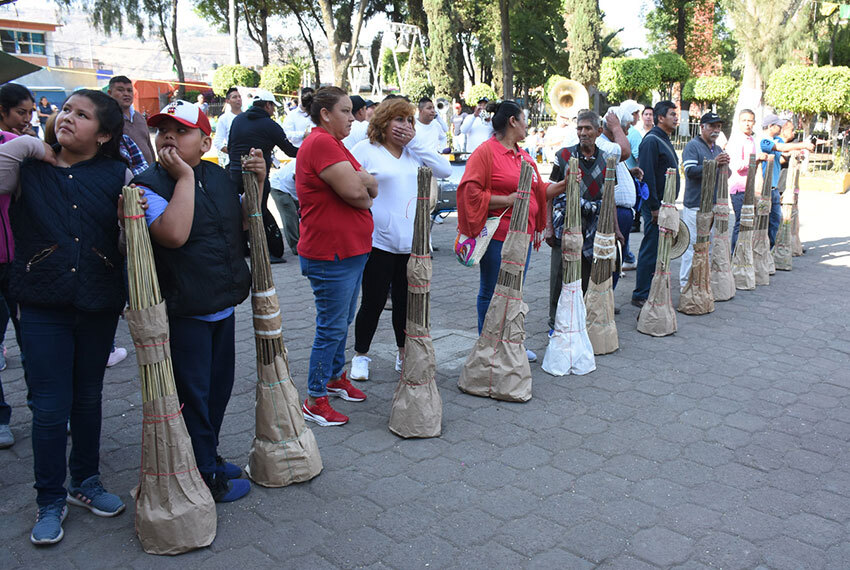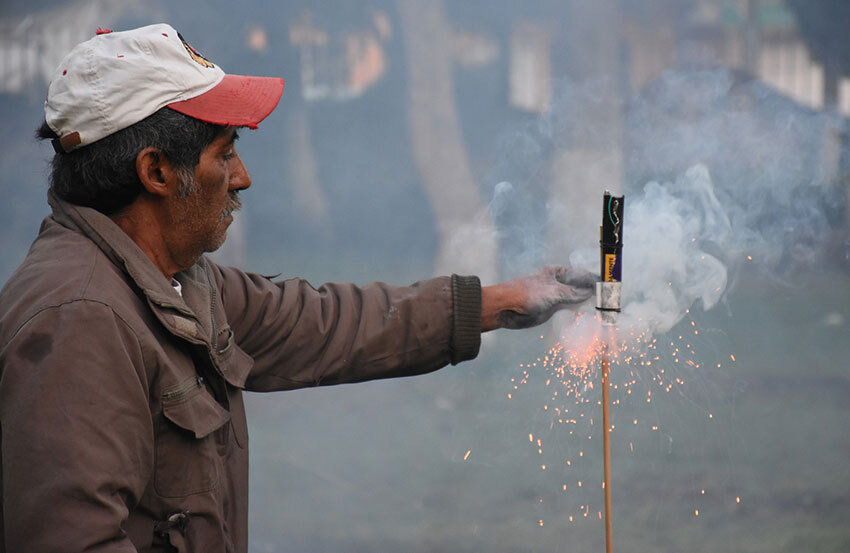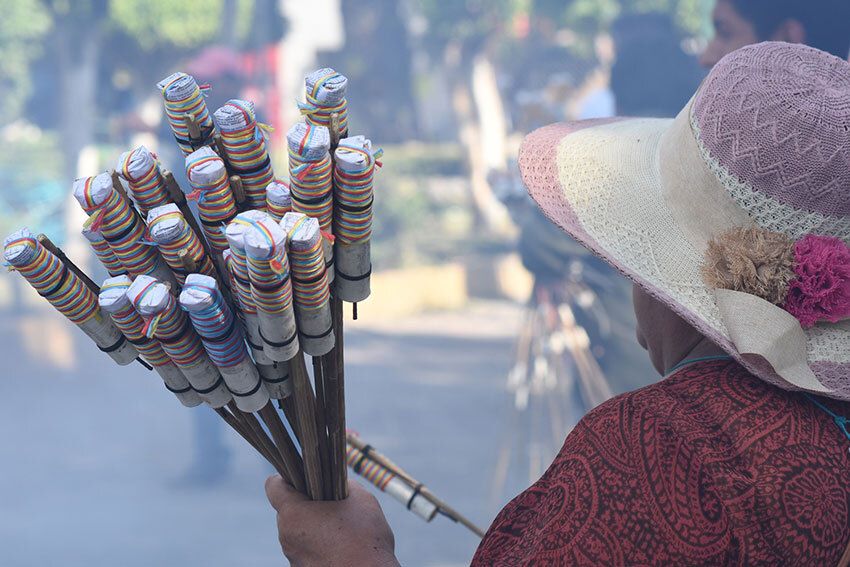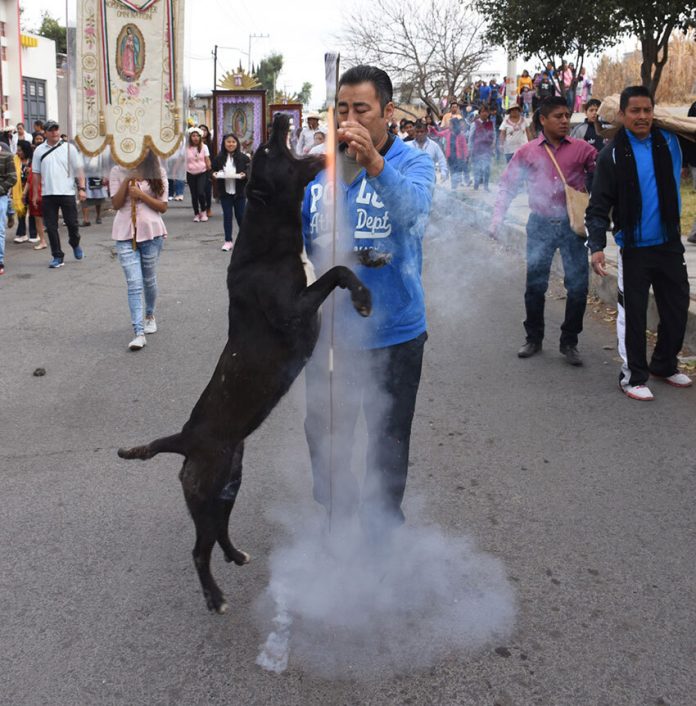When I complain to friends back in the U.S. about cohetes, the bottle rockets that are a staple of Mexican celebrations — and I’ll freely admit that I complain way too often, their typical response is, “You know, we have bottle rockets here too.”
It usually comes with a sigh, and I can picture them shrugging. But what passes for bottle rockets in the U.S. are these dinky, one- or two-inch-long glorified firecrackers that go “pop” when they explode. Mexicans have large, military-grade rockets that explode with a concussive boom.
I lived in Mexico for months before I could stop flinching when they went off, which in San Gregorio Atlapulco, a town in Xochimilco, Mexico City, can be two or three times a week, or sometimes more often. A barrage can last anywhere from a few minutes to an hour. We can thank, or curse, the Spaniards for bringing cohetes to Mexico.
The first recorded use of cohetes in Spain was in 1554 at the wedding of Philip II of Spain and Maria Tudor of England. That apparently set the stage for their use in other celebrations. They were readily accepted in Mexico.
“It is a tradition from the colonial period, brought from Spain,” said Javier Márquez Juárez, who has written extensively about the history of San Gregorio. “They represent lightning. Because cohetes climb to the sky, they are associated with rain and Tlaloc, the god of rain.”

The Fiesta de San Gregorio, a celebration of the pueblo’s patron saint, is in March, which coincides with the beginning of the rainy season, a critical time for agriculture in Mexico.
“Since rain is so important, we light many, many cohetes during that fiesta,” said Márquez.
Jozafath Abad has overseen the salva, the volley that happens at the beginning of the fiesta, for seven years.
“It is a tradition from our ancestors,” he said, “from father to father. It is to celebrate the fiesta, the birthday of our patron saint, to give thanks to him. It is also to petition for rain so that there will be a good harvest of maíz [corn]. Cohetes bring rain.”
There are a couple of salvas during the event, the largest beginning around 6 a.m. and continuing for about an hour.
Some people place cohetes in a thin metal tube and light them but the preferred method is to hold it gently between your thumb and index finger, placing a lit cigarette to the fuse and letting it go when it catches. The fingers of people using this method are burned and blackened by the sparks flying off the fuse. I thought it best not to try this. To be honest, I thought it best not to try any method for lighting them. I value my fingers.

They are also frequently used in what’s known as religión popular (popular religion).
“Cohetes are used to give thanks to a particular saint or virgin,” said María Teresa Contreras González, who sells fireworks. “To venerate the saint, to give a blessing.”
They’re also used three times at the beginning of pilgrimages.
“The first cohete announces that the pilgrimage is about to start,” said Raúl Hernández Serralde, who has organized pilgrimages to Chalma in México state. “The second is to tell people to come now, and the third is to show the route.” They’re also set off during the pilgrimage to continue announcing the route.
Smoke from the cohetes is also symbolic. According to an article by María del Carmen Vázquez Mantecón, it represents a connection between humans and gods. She also points out the close connection they have with the agricultural cycle and the petitioning for rain.
Sometimes it seems like there’s always a reason to light them. In addition to a saint’s feast day and pilgrimages, they’re used during funeral processions, when the first stone is laid for a home and also when the last one is in place. You’ll hear them during quinceañeras and velaciones, the ceremonies that occur the night before major fiestas. They’re present at recorridos, religious processions that travel through San Gregorio, and posadas, Christmas events that take place December 16–25.

When asked why cohetes are so often a part of celebrations, Hernández smiled. “They are a symbol of joy,” he said.
Aurelia Olivos Navarette has gone on dozens of pilgrimages and recorridos and, as a resident of San Gregorio, is quite familiar with cohetes.
“Sometimes they bother me,” she admitted, “but they are very pretty because it means there is a fiesta or some other event.”
When I hear cohetes, which is still a few times a week in San Gregorio, and feel myself getting annoyed, I remind myself that they signify joy, that somewhere someone is having a celebration. It’s kind of hard to get upset about that.
Joseph Sorrentino is a regular contributor to Mexico News Daily.
